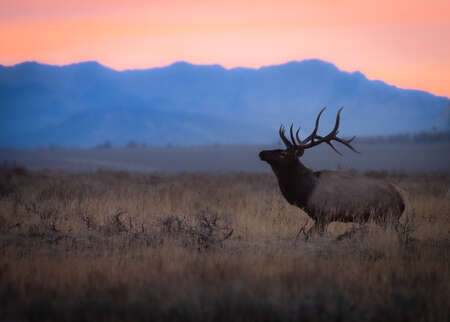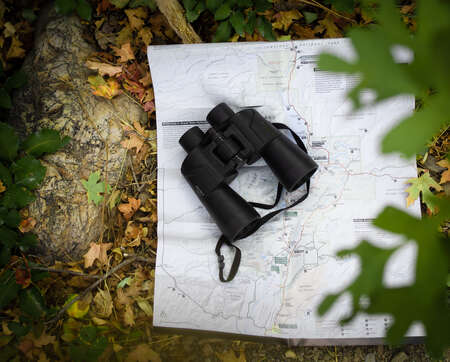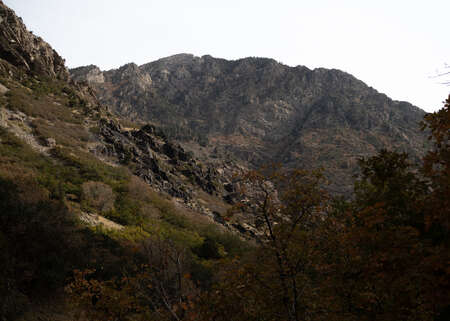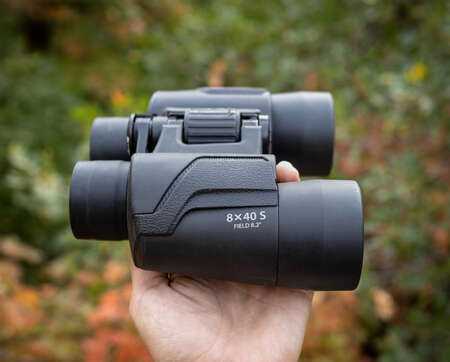Morning has come. The red sun rises over the mountains. I’ve been waiting in the blue predawn darkness for the elk to leave their beds in the tall grass and make their way across the meadow to the cold mountain creek for their morning drink. This morning is one of the rare moments where everything comes together perfectly - a bull elk breaks from the rest of the herd and runs across the meadow alone. He lifts his head and heavy crown of antlers just as the sunrise sets the sky ablaze with color.
When I chat with people about wildlife photography, one of the most popular questions people ask is: how do you find your subjects? Truth is, there really isn’t one clear answer. Finding wildlife is a mixture of research, hard work, and luck. There is also a considerable amount of planning that goes into each shoot - sometimes more than one might expect. Wildlife is largely unpredictable, but there are certain behavioral patterns that you learn to anticipate as you gain more experience. In this case, I was able to anticipate that after an unseasonably warm autumn night it was likely that this elk herd would be thirsty when they woke up, and they would most likely head right to the creek for a drink first thing in the morning.
The evening before I sat atop a hill with my Olympus 10x50 S binoculars and glassed the distant valley for any sign of elk. It wasn’t long before the bino’s crisp magnification brought a herd of elk into vivid focus and I knew I’d finally found my subjects. They were grazing in the meadow below, and some of them had already started bedding down for the night. I hadn’t photographed a single animal yet on this trip, and was feeling impatient after having already been in the field for four days searching. Naturally my impatient brain wanted to take off down into the gulch to close the mile distance between me and the elk, but I knew this would most likely spook them before I was close enough to get a photo. Instead, I studied the meadow with my binoculars to get the lay of the landscape around them so I could better plan how I would photograph them in the morning. Despite the growing darkness I spotted a creek near the herd through my binoculars and knew that was the key to getting the shot.
The next morning I was able to hike out under the cover of predawn dark and position myself downwind from the herd. Again, I watched through the binoculars as the sky began to lighten and the elk started moving around. That’s when things slowly came together, and I finally got the shot.
In my opinion, Olympus’s binocular lineup is their most underrated gear. As a wildlife photographer, binoculars are as important to me as my camera and telephoto lens. I can not get the shot without them. Olympus combines their expertise in design and optical magnification technology in their binos. Just like Olympus’s PRO camera and lens lineup, their outdoor binoculars are completely weatherproof and extremely durable. Rain, rocks, snow, and dust are no obstacle for these puppies.
Without my binoculars there’s a good chance I never would have spotted those elk from across the mountains, and I most certainly would never have seen the creek which would become so essential to planning where to position myself for the morning shoot. The high contrast optics enabled me to see the fading light reflecting on the surface of the creek as it would through the dense underbrush.
If you’re an outdoor enthusiast with an interest in wildlife, these binoculars are absolutely essential gear to add to your kit.
Instagram: @brookelittlebear
Brooke is a wildlife photographer based out of Salt Lake City, Utah. She has always been a lover of animals, and when she first began shooting she was naturally hooked on photographing wildlife right from the start. Her ultimate goal is to photograph all the core species of megafauna found in North America. When Brooke is not actively photographing, tracking, or scouting for wildlife, you can find her snowboarding.
NOW SHIPPING!
NEW EXPLORER SERIES BINOCULARS
Choose from three new binoculars featuring high quality optics in a sleek, lightweight design. The perfect companion for nature, bird and wildlife photographers, the Explorer Series features magnifications between 8x and 16x.




